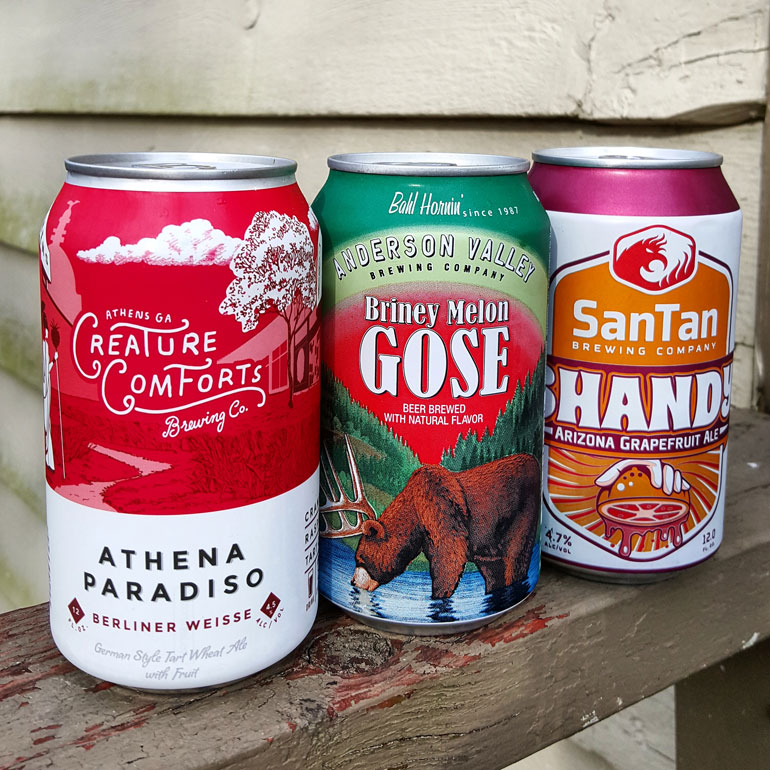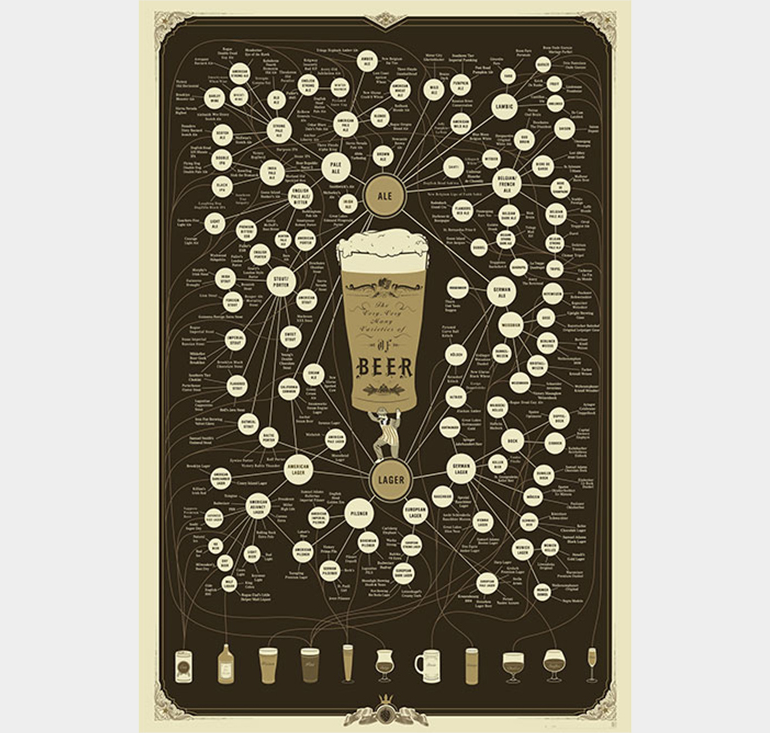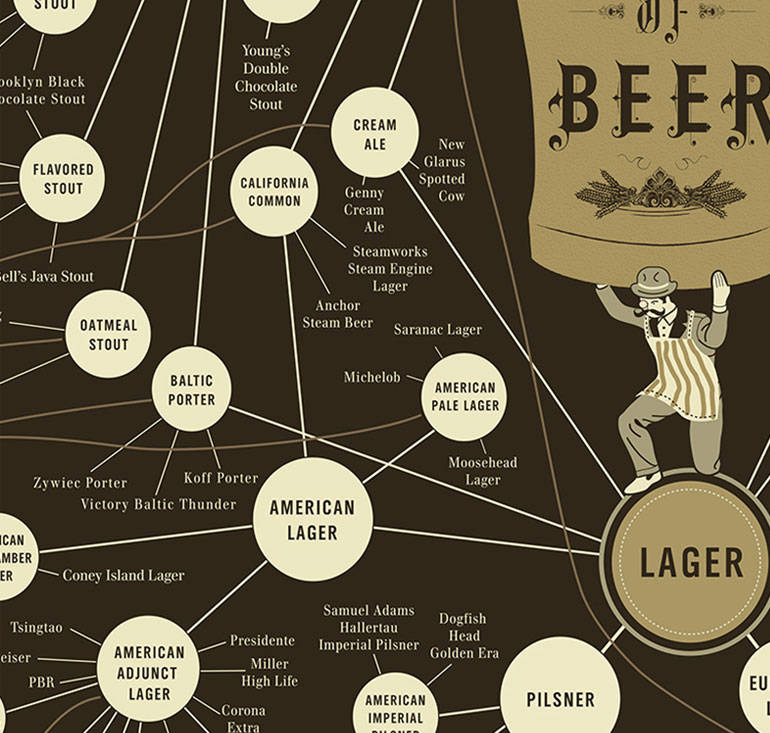Start 14-Day Trial Subscription
*No credit card required

Too Many Beer Styles
Craft beer used to be simpler. In the early days, Anchor Liberty Ale and Sierra Nevada Pale Ale were considered extremely flavorful and envelope-pushing -- shocking the taste buds of many neophyte drinkers when they debuted decades ago. Now, those two standards of the American IPA style are fairly dated and pedestrian. If a hoppy beer isn’t turbid and opaque, with layers and layers of sticky, juicy goodness wrapping around your tongue, chances are it will be forgotten and shunted aside in favor of the newest, hottest, hoppiest beer around.
With extreme and constant experimentation with wacky ingredients the new norm in American craft beer, an obvious casualty of this turn of events are beer styles. As beer tastes change, new styles develop, older styles are rediscovered and recent styles are critiqued and transformed, style guidelines become as changeable and chameleonic as a politician looking for votes.
Beer styles have become a gigantic, multi-limbed beast with no clear “right choice.” Almost all major beer tastemakers have their own way of looking at things, with no one set of guidelines better than the others.
Styles used to be sacrosanct, especially in craft beer’s early days. No one wanted to rock the style boat too much, for fear of losing out fans of other breweries’ beers. Now, with rampant style destruction occurring daily at craft breweries around the country, styles have been made almost completely redundant… and is that such a bad thing?
Number of beer styles listed on major outlets:
Ratebeer.com: 77 styles
Craftbeer.com: 79 styles
BeerAdvocate.com: 105 styles
Beer Judge Certification Program: 118 styles
Brewers Association: 152 styles
Sure, some styles will always exist, such as the aforementioned American IPA. It doesn’t look like craft beer drinkers’ desire for hopped-up American IPAs will ever abate, at least not at the rate the craft beer industry’s growth is trending. However, comparing Anchor Liberty Ale to something like Modern Times’ Underworld Dreams is laughable, as the only thing those two beers share is the same state of origin (California).
Anchor Liberty Ale is a flagship example of what a classic American IPA should be. Showcasing American hops like Cascade and Centennial, it features a fairly balanced malt-to-hop ratio, a filling mouthfeel and serviceable hop strength. Underworld Dreams, on the other hand, is a hazy, sticky mouthful with a gargantuan hop quotient and grassy, flowery hop aromas and flavors with almost no malt character present. Both of these beers are represented as American IPAs across numerous outlets, but they’re influences, ingredients and brewing methods are obviously very, very different.
Still though, they both have their merits in the craft beer sphere. For one thing, Modern Times limited-release cans are extremely hard to come by, and the batch size is miniscule, especially in comparison to Liberty Ale, which is readily available nationwide because of Anchor’s position as a Top 50 brewery in the U.S.
Is one of these beers better than the other? Many fervor-stoking fanboys would have you believe that Underworld Dreams is a fantastic, transcendently hoppy masterpiece, but the Anchor's offering is far truer to the American IPA style than the other – so does that make it a better beer?

Beer styles have been made almost completely redundant… and is that such a bad thing?
Another big issue with beer styles is the use of adjuncts – specifically the addition of fruit to almost every style imaginable, with American IPA again leading the charge in this regard. Here at The Beer Connoisseur, we employ the BJCP style guidelines, which we feel is just segmented enough to provide a broad swathe of styles, while also streamlining them into simple, organized categories.
Still though, the craft beer scene is transforming at such a rapid pace that the 2015 guidelines, which are the most current (before that, it hadn’t been updated since 2008) are obsolete in some places. In terms of Fruit Beer, there are no specified places for Fruit IPAs or Ales with Fruit, but rather the far more sparsely populated categories such as Fruit Lambic. The Fruit Beer style does exist, but it is so broad that it includes any beer with fruit added that doesn’t have fruit as part of its “usual ingredient list” (such as the aforementioned Lambic styles).
This is a very limiting trait of the BJCP Style Guidelines, but one that Craftbeer.com falls victim to, except on an ever larger scale. Not only do Fruit Beers get their category with no subcategories, but it’s lumped together with Field Beers, which are beers that use vegetable and herbs in their ingredient list.
Perhaps there is no clear-cut solution to the problem of styles, and maybe, that’s exactly what needs to happen. The Brewers Association list of styles has the most at 152 for the 2016 list, (7 more than the 2015 list had) so it looks like style momentum isn’t going to slow down anytime soon.
As more styles will inevitably be created and older styles get repurposed and transformed, perhaps a revolution needs to happen: less focus on style and more focus on quality, execution of recipe and how that beer compares to other beers in a brewery’s portfolio. It’s tough to compare beers to a hypothetical “perfect example” of a beer style whose definition might change from one month to the next. Just enjoy the beer as it’s presented to you and maybe style confusion will be a thing of the past.
Poster is available for purchase from The Grommet here.





Comments